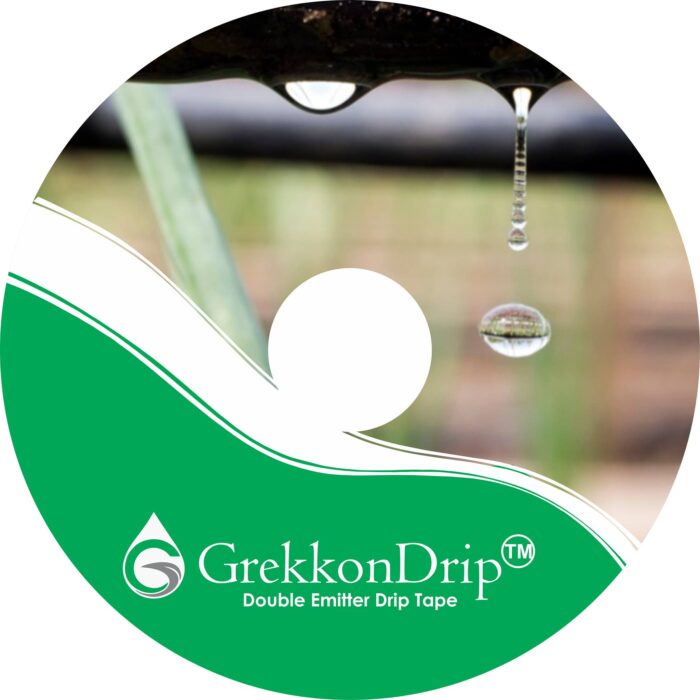
Drip Irrigation System
Every drip irrigation system in Kenya by Grekkon Limited supported by a HDPE or PVC line. We are the largest drip irrigation kits suppliers in Kenya, reaching the highest number of farmers. At the very bottom we do simple drip irrigation systems, also known as kitchen garden drips
It advances to 1 acre drip irrigation kits, 5 acre drip irrigation systems to hundreds of acres. Our drip pipes for sale in Kenya are the double emitter drip irrigation pipes
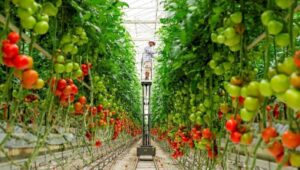
Drip Irrigation Kits Prices In Kenya Are A Factor Of
- Crop type
- Bed spacing
- Terrain
Drip Irrigation System Cost Per Acre In Kenya
| Crop Type | Lines Per Bed | Acreage | Cost in Kes |
| Watermelon, sweet melon, butter nut | 1 | 0.125 | 15,000 |
| 0.25 | 25,000 | ||
| 0.50 | 45,000 | ||
| 1 | 85,000 | ||
| Tomato, cabbage, chillies, capsicum | 2 | 0 | 25,000 |
| 0.25 | 40,000 | ||
| 0.50 | 75,000 | ||
| 1 | 140,000 | ||
| Onion, garlic, herbs, spices, strawberry, green beans | 0 | 27,500 | |
| 3 | 0.25 | 45,000 | |
| 0.50 | 85,000 | ||
| 1 | 160,000 |
Drip Kit Components
- The main line. This is a PVC or a HDPE pipe. The choice of pipe thickness is according to the pressure of the water in it. A farmer with gravity flow has a thinner pipe than one with a high pressure water pump
- Water filter. To remove impurities that will otherwise block the drip pipe emitters
- Gate vales. They control the water movement from one point to another by opening or closing
- Main line fittings; tees, elbows, adaptors, connectors, saddle clamps, reducers, and end caps. They are either PVC or HDPE as per the pipe. Their size depends on the pipe size
- The sub main line. This is connected to the main line, and is the origin of drip lines
- Sub-main line fittings; tees, elbows, adaptors, connectors, saddle clamps, reducers, and end caps. They are either PVC or HDPE as per the pipe. Their size depends on the pipe size
- Drip pipes. These pre-perforated pipes have emitters that supply water to the crop directly
- Drip fittings; starter connectors, off take connectors, drip to drip connectors, rubbers, mini-valves, and end caps
Top Water Pumps In Kenya
Top water pumps in Kenya are listed via their categories. To choose the best water pumps in Kenya by Grekkon limited, we answer the following questions
1. Which is the best water pump to buy?
It depends on;
- Intended use. A domestic water pump differs from an irrigation water pump. The tabulations in part 2 below are our irrigation water pumps for sale
- Amount of water needed
- Amount of pressure required
- Preferred power source. Is it solar, electric, petrol, or diesel?
- Your budget
2. How much does a water pump cost in Kenya?
Top water pumps in Kenya; prices by power categorisation
2.1. Electric water pump prices in Kenya
2.1.1. Electric Surface water pumps
| Model No | Power Kw-Hp | Head (M) | Flow rate (liters/ min) | Inlet/ Outlet size in Inches | Motor Phase | Price in Kes |
| 1. Single impeller centrifugal pumps | ||||||
| CM 32 | 0.75 – 1 | 32 | 120 | 1 | Single | 13,570 |
| CM 35 | 1.1 – 1.5 | 35 | 140 | 1 | Single | 27,142 |
| CM 45 | 1.5 – 2 | 45 | 160 | 1-1/4 / 1 | Single | 33,570 |
| CBM 303/B | 2.2 – 3 | 17.4 | 1,000 | 3 | Single | 67,140 |
| 2. Twin impeller centrifugal pumps | ||||||
| 2CM 25/160A | 2.2 – 3 | 65 | 160 | 1-1/4 / 1 | Single | 75,715 |
| 2C 25/160A | 2.2 – 3 | 65 | 160 | 1-1/4 / 1 | Three | 84,285 |
| 2C 32/210C | 5.5 – 7.5 | 90 | 300 | 37,987 | Three | 138,570 |
| 3. Monoblock centrifugal pumps | ||||||
| CS 32-200C | 4 – 5.5 | 40.7 | 600 | 1-1/2 / 1-1/4 | Three | 104,285 |
| CS 32-200B | 5.5 – 7.5 | 55.7 | 600 | 1-1/2 – 1 | Three | 131,430 |
2.1.2. Electric Submersible water pumps
| Model No | Power Hp | Head (M) | Flow rate (liters/ hour) | Price in Kes |
| DW 1050 | 0.5 | 34 | 3,000 | 18,000 |
| DW 1100 | 1 | 67 | 2,500 | 20,800 |
| DW 1150 | 1.5 | 81 | 3,000 | 27,900 |
| DW 2000 | 2 | 108 | 3,000 | 35,000 |
| SBH 1050 | 0.5 | 54 | 3,000 | 23,000 |
| SBH 1100 | 1 | 95 | 2,500 | 25,000 |
| SBH 1500 | 1.5 | 128 | 4,500 | 36,500 |
| SBH 2000 | 2 | 168 | 4,500 | 43,800 |
| SBH 3000 | 3 | 237 | 4,500 | 56,500 |
| SBH 4000 | 4 | 270 | 4,500 | 70,000 |
| SBH 4000-3 | 4 | 304 | 4,500 | 82,200 |
2.2. Solar submersible water pump prices in Kenya
| Model No | Power Hp | Watts | No & Panel Size | Head (M) | Flow rate (liters/ hour) | Price in Kes |
| SP 0.5N | 0.6 | 700 | 300W x 1pc | 40M | 5,800 | 37,120 |
| SP 0.6N | 0.8 | 1,200 | 300W x 2pcs | 60M | 5,800 | 40,215 |
| SP 0.8N | 1.1 | 1,300 | 300W x 3pcs | 70M | 5,800 | 46,400 |
| SP 1.0N | 1.3 | 1,400 | 300W x 3pcs | 80M | 5,800 | 52,600 |
2.3. High pressure diesel water pump prices in Kenya
| Model | Specs; head, flow rate, outlet size, and horsepower | Price in KES |
| AICO | 60M, 40 cubic per hour, 3″ and 10Hp | KES 77,000 |
| Stallion | 75M, 39 cubic per hour, 3″ and 14Hp | KES 80,000 |
| Carltons UK | 85M, 45 cubic per hour, 3″ and 14Hp | KES 80,000 |
| Power Italia | 95M, 39 cubic per hour, 3′ and 14Hp | KES 85,000 |
| Lifan | 84M, 41 cubic per hour, 3″ and 16Hp | KES 85,000 |
| Power Italia | 55M, 120 cubic per hour, 4″ and 16Hp | KES 95,000 |
2.4. How much is a petrol water pump in Kenya?
| Model | Specs; head, flow rate, outlet size, and horsepower | Price in KES |
| KATO | 48M, 36 cubic per hour, 2″ and 6.5Hp | KES 18,000 |
| AICO | 25M, 45 cubic per hour, 2″ and 7Hp | KES 18,000 |
| Ingco | 55M, 36 cubic per hour, 3″ and 8Hp | KES 20,000 |
| Daishin Honda | 32M, 60 cubic per hour, 2″ and 7Hp | KES 32,000 |
| Lifan | 60M, 37.8 cubic per hour, 2″ and 7.5Hp | KES 32,000 |
| Carltons UK | 60M, 37.8 cubic per hour, 2″ and 8.5Hp | KES 35,000 |
| AICO | 75M, 20 cubic per hour, 2″ and 7Hp | KES 35,000 |
| Hisaki | 90M, 30 cubic per hour, 2″ and 7Hp | KES 35,000 |
| AstraMilano | 90M, 36 cubic per hour, 2″ and 7Hp | KES 35,000 |
| Power Italia | 120M, 30 cubic per hour, 2″ and 13Hp | KES 70,000 |
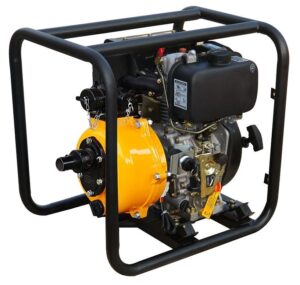
3. What is the most powerful water pump?
The most powerful water pump is one with the highest;
- flow rate
- head
- Hp or kilo watt rating
Top water pumps in Kenya are varied. The best water pumps in Kenya are based on the client’s preferred use.
Greenhouse Construction In Kenya
Greenhouse construction in Kenya vary from small units of 120M sq, to large commercial units occupying ten of acres. The table below shows common greenhouse sizes for small to medium acreageGreenhouse Construction in Kenya
A. Small
| Dimensions in meters | Tomato Crop Population | Price in KES |
| 15 x 8 | 600 | KES 195,000 |
| 24 x 8 | 800 | KES 275,000 |
| 30 x 8 | 1,200 | KES 365,000 |
| 40 x 8 | 1,500 | KES 530,000 |
| 48 x 8 | 1,600 | KES 600,000 |
B. Medium
| Dimensions in meters | Tomato Crop Population | Price in KES |
| 24 x 16 | 1,500 – 1,600 | KES 540,000 |
| 30 x 16 | 2,400 | KES 660,000 |
| 40 x 16 | 3,000 | KES 990,000 |
Greenhouse Construction In Kenya
Factors to consider- Land area. The area of the greenhouse will be restricted by the land area available to set it up
- Water availability. In water deficit locations, the size of the greenhouse will be limited by the the area that thos water volume will irrigate optimally
- Budget. Greenhouse constriction is a capital investment. The financial resources available will determine the size of the greenhouse built in a session
- Use. A greenhouse to propagate seedlings for a farm will be smaller in size than the greenhouses where these seedling are being established
Greenhouse construction in Kenya
These are the materials that determine our steel greenhouse construction prices in KenyaI. UV treated greenhouse polythene with anti drip properties
This is the key material that protects the crop from the elements of weather; sun, wind and rain. It creates the ‘greenhouse effect’, and minimises disease and pest incidences on the crop. It is either clear or yellow in color. Clear greenhouse polythene for fruiting crops, or in ornamentals, bi or multi colors. This is because it allows in more light which these need for photosynthesis, the process that makes food for the plants. Yellow is for vegetative crops, and mono color ornamentals. In mono color ornamentals, it intensifies the colorII. Galvanised steel bars
They provide structural support to the greenhouse, and also to the crop as ‘crop support structures’ for tall indeterminate crops such as; tomato, peppers, and cucumbersIII. UV treated high density insect nets
These nets keep away insect pests. They are for self pollinating (do not require external pollinators such as insects and birds) greenhouse cropsIV. Bird nets
These are only used in greenhouse crops that require insect pollination from bees, butterflies, hornets and many other pollinating insects. They allow in the insects, but keep away bird pests. An example of such a crop is strawberryV. Profiles
They are screwed onto the galvanised steel bars so that the greenhouse cover is tucked in themVI. Wiggle wires
Once the greenhouse cover is tucked in the profile, wiggle wires keep it in place so that it is not removed by wind or other physical force. Wiggle wires have a plastic covering to prevent damage to the greenhouse paper the are in direct contact with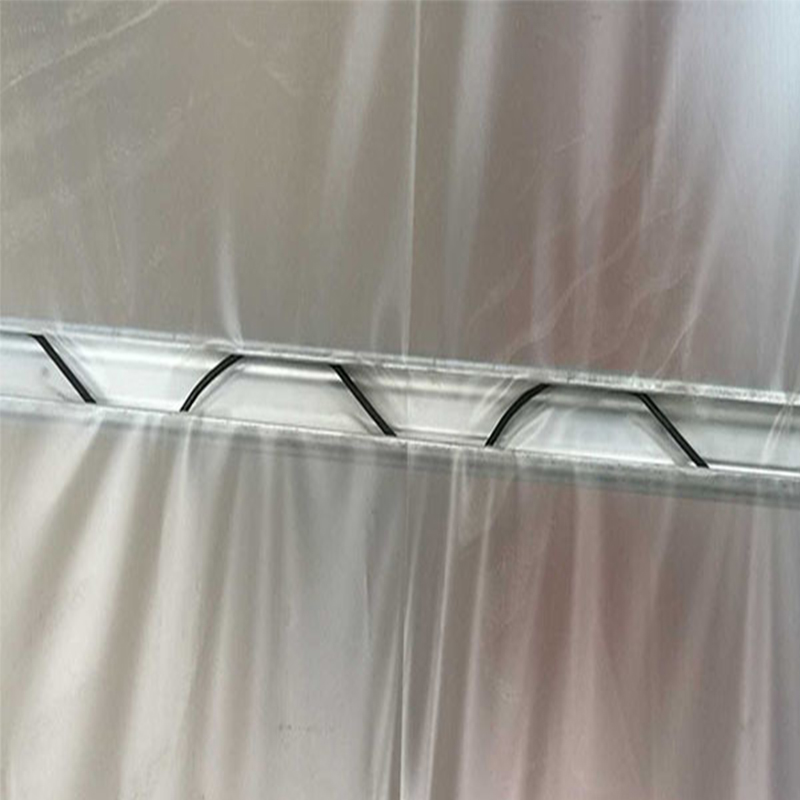
Wiggle wires hold in place a clear greenhouse polythene sheet tucked in a profile
VII. Screws
The join the profiles to the galvanised steel structureVIII. Concrete
This is what supports the galvanised steel structures on the ground and keeps them upright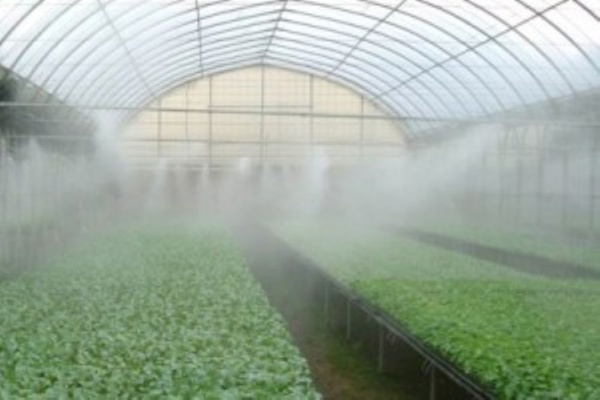
Humidification through misters in a seedlings propagation greenhouse

Electric Water Pump Prices
Electric water pump prices by Grekkon Limited are provided for both surface electric water pumps, and electric submersible water pumps.
Similarities Between surface, and Submersible Electric Water Pumps
- both use alternating (AC) current
- both have electric motors to power the pump
- each either works with single or 3-phase power depending on the motor size
- each has domestic use, and commercial irrigation use models
- both are centrifugal pumps
- both categories have sewage pumps
Differences Between Surface, and Submersible Electric Water Pumps
- surface electric pumps only work outside of water
- submersible electric water pumps only work inside water
- submersible electric pumps are made of stainless steel
- a surface electric pump’s body is made of cast iron
- there are booster pumps as electric surface pumps. There is no such for submersible electric pumps
Electric Water Pump Prices In Kenya
1. Surface Electric Pumps Prices
| Model No | Power Kw-Hp | Head (M) | Flow rate (liters/ min) | Inlet/ Outlet size in Inches | Motor Phase | Price in Kes |
| 1. Single impeller centrifugal pumps | ||||||
| CM 32 | 0.75 – 1 | 32 | 120 | 1 | Single | 13,570 |
| CM 35 | 1.1 – 1.5 | 35 | 140 | 1 | Single | 27,142 |
| CM 45 | 1.5 – 2 | 45 | 160 | 1-1/4 / 1 | Single | 33,570 |
| CBM 303/B | 2.2 – 3 | 17.4 | 1,000 | 3 | Single | 67,140 |
| 2. Twin impeller centrifugal pumps | ||||||
| 2CM 25/160A | 2.2 – 3 | 65 | 160 | 1-1/4 / 1 | Single | 75,715 |
| 2C 25/160A | 2.2 – 3 | 65 | 160 | 1-1/4 / 1 | Three | 84,285 |
| 2C 32/210C | 5.5 – 7.5 | 90 | 300 | 1-1/4-1 | Three | 138,570 |
| 3. Mono-block centrifugal pumps | ||||||
| CS 32-200C | 4 – 5.5 | 40.7 | 600 | 1-1/2 / 1-1/4 | Three | 104,285 |
| CS 32-200B | 5.5 – 7.5 | 55.7 | 600 | 1-1/2 – 1 | Three | 131,430 |
Electric booster pumps have 0.5Hp to 0.75Hp with an outlet pipe size of 1″. They are for domestic use such as to provide in-house or gardening water. The choice of the pump depends on the scale of use, and the amount of water available.
2. Submersible Electric Water Pump Prices
| Model No | Power Hp | Head (M) | Flow rate (liters/ hour) | Price in Kes |
| DW 1050 | 0.5 | 34 | 3,000 | 18,000 |
| DW 1100 | 1 | 67 | 2,500 | 20,800 |
| DW 1150 | 1.5 | 81 | 3,000 | 27,900 |
| DW 2000 | 2 | 108 | 3,000 | 35,000 |
| SBH 1050 | 0.5 | 54 | 3,000 | 23,000 |
| SBH 1100 | 1 | 95 | 2,500 | 25,000 |
| SBH 1500 | 1.5 | 128 | 4,500 | 36,500 |
| SBH 2000 | 2 | 168 | 4,500 | 43,800 |
| SBH 3000 | 3 | 237 | 4,500 | 56,500 |
| SBH 4000 | 4 | 270 | 4,500 | 70,000 |
| SBH 4000-3 | 4 | 304 | 4,500 | 82,200 |
We install these pumps across E. Africa. In all submersible pumps installations, we provide a floater, and a control box.
In commercial installations, our technical team advices on the right pump to use always.
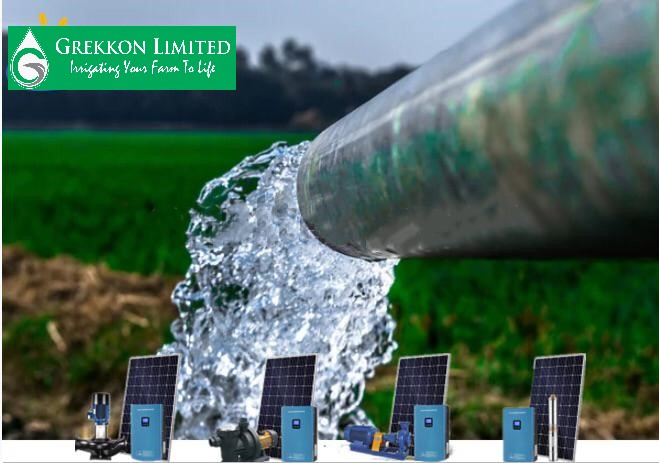
Solar Water Pumps For Agriculture
Grekkon Limited’s solar water pumps for agriculture have different specifications in pressure rating (head), flow rate, and the motor size (Megawatts). Our solar water pumps for irrigation in Kenya range from small portable to large immobile units
The choice of a farmer’s solar water pump is a factor of acreage because, the area under irrigation determines the water use Our solar water pumps prices are tailored to the well’s depth, yield and head. These solar pump’s costs range from as low as Kes 37,000 to over Kes 1,500,000. For instance, a farmer with a 6M shallow well yielding 0.5 cubic litres an hour will work with a basic solar water pump. Another grower with a deep well of 280M, and a yield of 15 cubic litres per hour will have a large pump installed
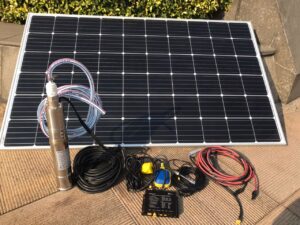
A simple to assemble solar submersible water pump kit for shallow wells
Types Of Solar Water Pumps For Agriculture
1. Submersible water pumps
These are the most common ones with farmers installing them in deep or shallow wells. They are also done in rivers and pools. They work when fully immersed in water. Stainless steel submersible solar water pumps are common in every well. There is a more efficient and affordable plastic version. This is for rivers, pools, and water tanks. It works with the same principle as the stainless steel one
Submersible solar water pumps for agriculture prices
Our solar water pumps prices range from as low as Kes 38,000 for small portable units, to over Kes 2,000,000 for large types. The former have a low head, and low water flow rate. The latter is for very deep wells and with lots of water
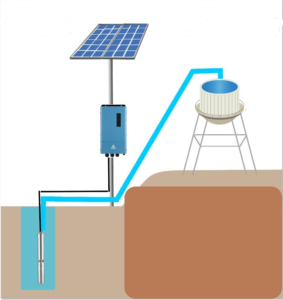
A graphic illustration of a stainless steel solar submersible water pump in a well installation
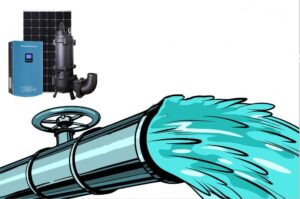
A plastic submersible solar water pump designed for rivers. pools and tanks
To recommend and price your right submersible solar water pump, a test pumping report is required. It will show; the well depth, the dynamic head, the static water level, and the pump placement level is necessary. Where such is lacking, then a float switch attached to the water pump is necessary. It ensures that it only works when submerged in water. The motor is damaged when the water pump runs ‘dry’
2. Surface solar water pumps
These solar surface water pumps work without any external contact with water unlike their submersible type counterparts. They are easily portable unless it’s too large to move about.
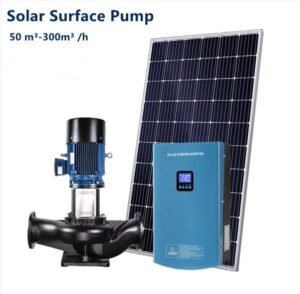
A solar surface water pump
3. Direct current (DC) water pumps
These are purely solar water pumps that work under a DC current. They will not require an inverter, unless a farmer chooses to install one. This is to modify it to use an alternating current (AC)
4. Alternating current water pumps
These are purely electric water pumps that work under an AC current. To convert it to a solar water pump, an inverter converts the DC to AC. The DC is from the solar panels
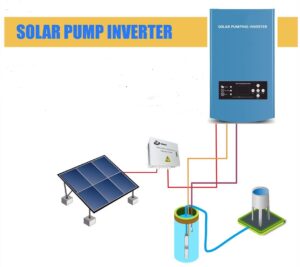
A illustration of a solar water pump inverter showing how it connects the entire system
Submersible solar water pump prices in Kenya
Solar water pump for irrigation prices (submersibles for shallow, low volume wells below 100M)
| Model No | Power (Hp) | Watts | No & Panel Size | Head (M) | Flow rate (liters/ hour) | Price in Kes |
| SP 0.5N | 0.6 | 700 | 300W x 1pc | 40M | 5,800 | 37,120 |
| SP 0.6N | 0.8 | 1,200 | 300W x 2pcs | 60M | 5,800 | 40,215 |
| SP 0.8N | 1.1 | 1,300 | 300W x 3pcs | 70M | 5,800 | 46,400 |
| SP 1.0N | 1.3 | 1,400 | 300W x 3pcs | 80M | 5,800 | 52,600 |
For solar submersible water pumps for deep well below 80M, we provided tailored units based on the test pumping results of the borehole
Solar-powered water pumps FAQs
I. How much is solar water pump in Kenya?
The solar water pump price depends on the features listed above; power rating, head, and flow rate. It can be a low-cost solar water pump that costs Kes 15,000, and or a borehole solar water pump as much as Kes 1,500,000
Solar pump prices are varied according to this
II. How much is a solar panel in Kenya?
Our price is Kes 50 per watt
III. What is a DC water pump?
A direct current water pump is one that uses a direct current from a solar panel or battery to push irrigation water
IV. Do you sell any portable solar water pump in Kenya?
Yes our shallow well solar water pumps are portable
V. Is it a low-volume high-pressure water pump?
Not all. Some of our submersible solar water pumps are high volume high-pressure water pumps. They have a high water flow rate. Most are high volume high-pressure pumps with a high water flow rate
VI. What is the best solar-powered water pump?
It depends on the individual’s use
VII. How does a solar pump work?
Solar energy from the sun is received on the panels. This energy as a direct current is fed to the motor to pump out the water
VIII. Do solar pumps work at night?
No, they don’t, unless powered by an external battery
IX. Which solar pump is the best?
To determine the most appropriate submersible solar water pump for a client, the following information will be provided
- Depth of the well or borehole
- The water level in the well or borehole
- Water requirement or use per day
X. What are the disadvantages of solar water pumping?
- The initial set up cost is expensive
- If placed in an insecure location, the risk of theft is high
- It does not pump at night or when it gets very cloudy
XI. Can I connect a pump directly to a solar panel?
No you cannot because all connections origination from the panel or the pump has to go through the control unit
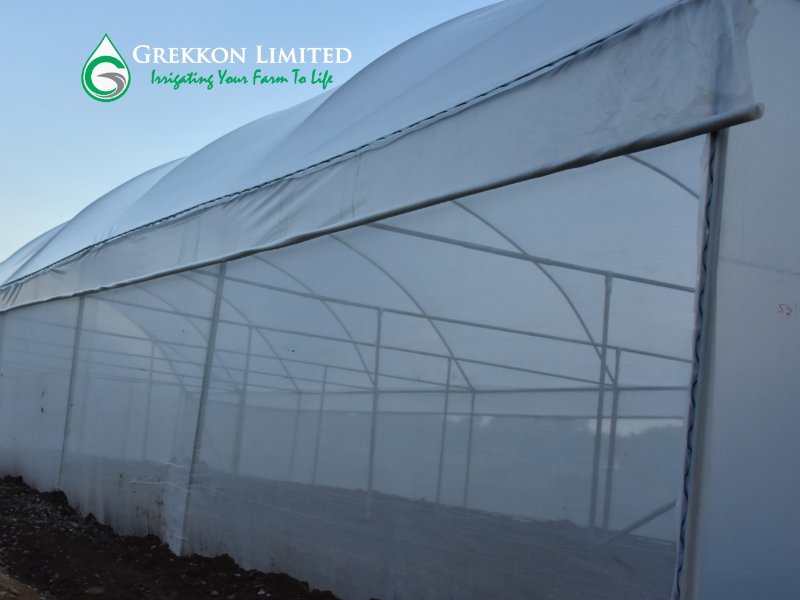
Affordable Greenhouses In Kenya
As a greenhouse company in Kenya, our affordable greenhouses in Kenya vary depending on the size, design, choice of crop, and the level of the steel frame treatment. In every project we undertake to create steel frame affordable greenhouses in Kenya, our price is pegged on these 3 considerations Size. Greenhouse sizes and prices are […]
Drip Irrigation Lines and Pipes
In this drip irrigation lines and pipes piece, we will answer commonly asked questions in relation to drip irrigation
1.What is drip irrigation tape?
This is a flat thin walled LLDPE material tube with sequential emitters for irrigation
2. How long do you water with drip tape?
This depends on the crop water need at the time of irrigation. It ranges from 25 minutes to 1.5 hours. It is recommended to irrigate daily over a short duration with the same amount of water to keep the crop happy
3. Can you re-use drip tape?
Yeas you will over several growing seasons. The thicker the wall size, the longer the re-use period
4. What is the maximum length of a drip irrigation line?
1,000M
5. How much water does drip tape put out?
This depends on the emitter specifications. We supply 1.5L/ hour, 2L/hour, and 3L/hour emitters in our drip tapes
6. How much do drip lines cost?
Grekkon Limited’s double emitter drip irrigation lines and pipes for sale in Kenya tapes are categorised by thickness; 0.3mm, and 0.4mm. Both are 16mm in diameter, 1,000M long and with a choice of emitter spacing as 15cm, 20cm, and 30cm
Cost of drip irrigation tapes
| Thickness | 0.3mm | 0.4mm |
| Price | KES 7,500 | KES 8,500 |
The choice of drip line thickness depends on
- is it for out door or greenhouse installation? 0.3mm is fine in the greenhouse because it is no directly exposed to sunlight
- radiation level. where the sun’s radiation is high, 0.4mm is better
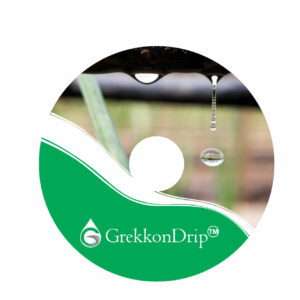
7. How much does it cost drip irrigation for 1 acre?
This depends on the crop type. Different crops have different drip irrigation piping requirements
Drip irrigation lines and pipes
By acreage pricing
| Crop Type | Lines Per Bed | Acreage | Cost in Kes |
| Watermelon, cucumber, butter nut | 1 | 0.125 | 15,000 |
| 0.25 | 25,000 | ||
| 0.50 | 45,000 | ||
| 1 | 85,000 | ||
| Tomato, cabbage, chilies, capsicum | 2 | 0.125 | 25,000 |
| 0.25 | 40,000 | ||
| 0.50 | 75,000 | ||
| 1 | 140,000 | ||
| Onion, garlic, herbs, spices, strawberry | 0.125 | 27,500 | |
| 3 | 0.25 | 45,000 | |
| 0.50 | 85,000 | ||
| 1 | 160,000 |
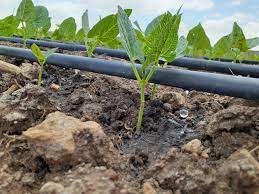
Drip irrigation on green beans by Grekkon Limited
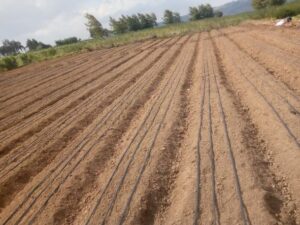
Drip irrigation pipes for onion installed by Grekkon Limited
8. What time of day is best for drip irrigation?
Early morning is highly recommended. If not, then in the evening
9.How much pressure does a drip irrigation system need?
The minimum operating pressure is 3M or 0.3 bar
10. What pipes size should I use for drip irrigation?
There are 3 lines in an irrigation set-up
- main line. This one delivers water to the farm from the source; tank, water pan, lake or river. It is the largest
- sub-main line. It is connected to the main line to supply water to the drip irrigation tubes. It is lesser in diameter than the main line
- drip irrigation tape. it supplies water directly to the crop
The pipe size is a factor of acreage. The main line diameter size on 10 acres is larger than the main line diameter size on half an acre of drip irrigation. These pipes are either HDPE or PVC types
11. How do I start my own drip?
Our technical team guides new drip irrigation farmers on starting out. These are the steps to follow
- identify the area to undertake drip irrigation. It will have a close water source
- what crop is to be grown? this will guide on the number of drip rows per bed
- what is your budget? it determines the acreage to set up the system
Suction Hose Pipes
Grekkon limited’s suction hose pipes for water pumps in irrigation are available as 2″, 3″ and 4″ diameter hoses. Our green Polyvinyl Chloride (PVC) suction hose pipes are designed to withstand high vacuum pressure without collapsing. This is why they are ringed internally to hold the tubing in place during water pumping. This unique feature distinguishes them from other irrigation pipes
Our suction hoses for irrigation work with diesel and petrol generator water pumps, and electric centrifugal water pumps
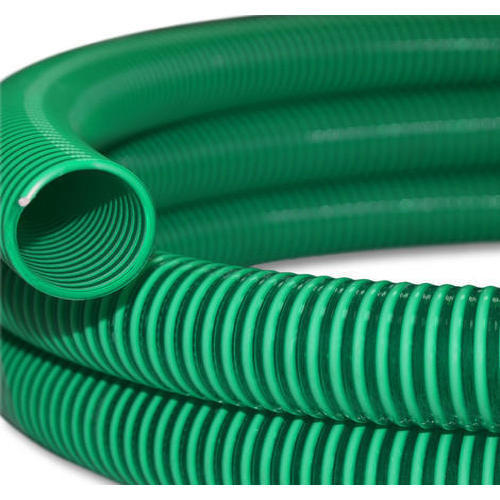
A 2″ diameter suction hose pipe. Notice the dark green rings that allow it to withstand high pressure pumping without the walls collapsing
Suction Hose Pipes Prices In Kenya
| Pipe Diameter | Price per M |
| 2″ | KES 460 |
| 3″ | KES 810 |
| 4″ | KES 1,430 |
Suction Hose Pipes
FAQs
1. What is a suction pipe?
It is a pipe that draws water from source to the water pump for onward evacuation. It is a crucial component of every water pumping system
2. How does a suction system work?
By creating a partial vacuum that draws water into it’s hollow space. This water is conveyed to the pump through the suction pipe
3. What is the function of a suction pipe?
- To draw water from the source and deliver it to the water pump
- It plays a role in the overall friction loss of the system. The larger the diameter, the lesser the frictional losses
4. What is the maximum length of a suction pipe?
8M or 26.4 feet. The suction distance is determined by the altitude. At sea level, the distance is longer than in high altitudes
5. Where is the suction connected to a water pump?
It is connected to the inlet portal of a water pump. The diameter size of the inlet determines the size of the suction pipe; they must be equal
This video illustrates a 3″ suction pipe feeding water a high diesel water pump during irrigation
6. How long can a suction pipe be on a water pump?
Not more than 8M. The higher the vertical pumping head of the water pump, the shorter the suction pipe is
7. What are the components of a suction system?
- the water source. This will be a stagnant reservoir, a flowing river or a storage unit such as a tank
- a foot valve. is an accessory attached at the base of the suction pipe. It prevents the water from flowing backwards when the water pump ceases. This way, the water is maintained in the suction pipe when the water pump isn’t working, thus sustaining a suitable prime for the water pump, and preventing pump burnout

A 3″ and 2″ plastic foot valve
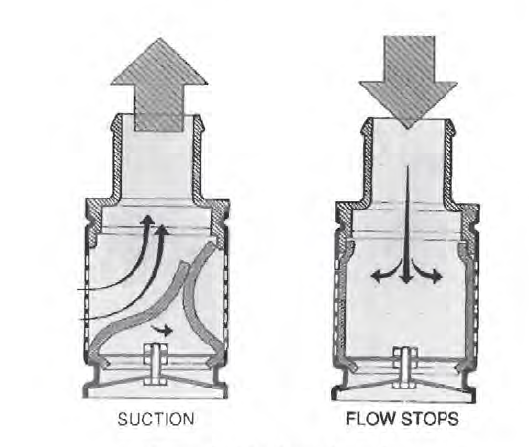
How a foot valve works
- the suction pipes for water pumps which evacuate the water from the source to the water pumps
- a water pump to receive for onward pumping of the water from the reservoir
8. How long can a suction pipe be on a water pump?
For as long as it is pumping
9. What is the minimum suction pressure?
0.6M. The best is 1.5M above the net positive suction head required (NPSHR). NPSHR is a fuction of the pump design
Borehole Drilling Cost In Kenya
Grekkon Limited’s borehole drilling cost in Kenya through a mechanical drilling rig is dependent on 2 factors:
- The borehole drilling method; air v mud drilling
- Casings type to install; PVC v steel casings
- The geographical drilling location; determines the mobilisation cost
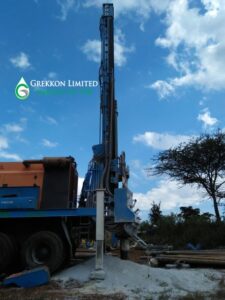
A Grekkon Limited borehole drilling rig on site at Matuu area, Machakos county
The borehole drilling method
There are 2 borehole drilling methods;
I. Air drilling / pneumatic percussion drilling is an under-balanced drilling technique (UBD). Here, compressed air or nitrogen is used to cool the drilling bit and extract the cuttings of a well-bore instead of fluids. this is carried on stable ground with a proper rock formation
II. Mud rotary drilling. The fluid is pumped down the hollow drill pipe (kelly) and forced out of jets in the drill bits. It is an open hole reciculatory drilling method. Chemicals used here are; Bentonite clay (Gel), Barium sulphate (Barite), Calcium carbonate (chalk), and Hematite
The location. The further it is from our branches, the higher the mobilisation cost
Our borehole drilling price in Kenya varies with the the drilling method, which is determined by the rock structure
Borehole Drilling Price In Kenya
By Drilling Method
| Drilling Method | What it entails | Price in KES Per Meter |
| 1. Air drilling | Drilling on stable ground that has a proper rock formation beneath | KES 6,500 |
| 2. Mud drilling | Drilling on loose ground that has no or minimal rock beneath | KES 14,050 |
Borehole Drilling Cost in Kenya
Details
| Process | Cost Per Meter- Air drilling method | Cost Per Meter- Mud drilling method | |
| 1 | Mobilisation | KES 420 | KES 420 |
| 2 | Drilling | KES 3,220 | KES 11,270 |
| 3 | Casing | KES 2,269 | KES 2,569 |
| 4 | Graveling | KES 280 | KES 280 |
| 5 | Well development | KES 70 | KES 70 |
| 6 | Test pumping | KES 420 | KES 420 |
| 7 | Water chemical analysis | KES 21 | KES 21 |
| Total | KES 6,700 | KES 15,050 |
- Mobilisation is the movement of human resource and equipment to the borehole drilling site
- Drilling is the actual sinking of the 8″ diameter well in the ground
- Casing is the installation of PVC or metallic 6″ diameter tubes to support the well, keeping it from collapse. Those along the water aquifer are slotted to allow in water into the well. The slots are 1mm to 2mm in size
- Graveling is the application of gravel in the 2″ gap between the well and the casings. Graveling holds the casings in place and also sieves the water
- Well development is the cleaning of the well to remove debris
- Test pumping is the process of pumping out water for 24 hours from the borehole with a large submersible water pump, powered an equally powerful generator. This establishes the water recharge rate (yield of the borehole) given in cubic litres per hour, and the static water level. The test pumping results determine the type of electric or solar submersible water pump install in the well
- Water chemical analysis is the last stage. A sample of water is analysed in the laboratory to determine it’s chemical composition. With these results, a grower assesses the suitability of the water for irrigation for specific crops according to their salt/ salinity tolerance
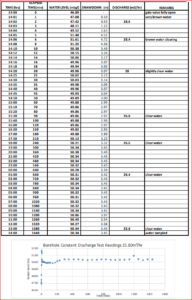
A test pumping report from a borehole drilling service by Grekkon Limited
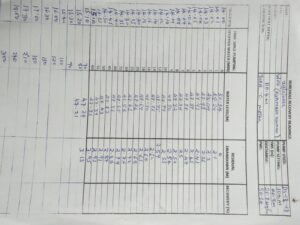
A water analysis report from a newly drilled well
Cost of Drilling A Borehole in Kenya
By Geographical Location
| County | Cost (Min) | Cost (Max) |
| Nairobi | KES 6,500 | KES 9,500 |
| Kajiado | KES 6,500 | KES 9,500 |
| Machakos | KES 6,600 | KES 9,500 |
| Kitui | KES 6,800 | KES 9,500 |
| Makueni | KES 6,700 | KES 9,500 |
| Kiambu | KES 6,500 | KES 9,500 |
| Nakuru | KES 6,800 | KES 9,500 |
| Kisumu | KES 7,500 | KES 9,500 |
| Turkana | KES 8,000 | KES 9,500 |
| Bungoma | KES 6,900 | KES 9,500 |
| Busia | KES 7,700 | KES 9,500 |
| Narok | KES 6,800 | KES 9,500 |
| Mombasa | KES 7,500 | KES 9,500 |
| Kilifi | KES 7,500 | KES 9,500 |
| Kwale | KES 7,600 | KES 9,500 |
| Baringo | KES 6,900 | KES 9,500 |
| Siaya | KES 7,600 | KES 9,500 |
| Homabay | KES 7,600 | KES 9,500 |
| Uasin Gishu | KES 6,900 | KES 9,500 |
JD Diesel Water Pumps
JD (Jiang dong) diesel water pumps in Kenya by Grekkon Limited are of varying specifications for agricultural use in irrigation. This specifications are in regards to; the engine power, the head, and the flow rate
Our JD diesel water pumps consist of a diesel engine, and a horizontal single-suction, single-stage, centrifugal water pump. The water pump is made from cast iron
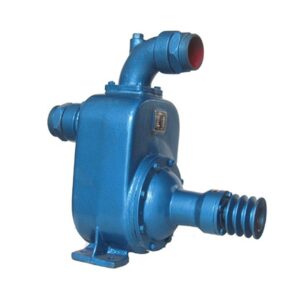
The water pump. It is rated by inlet/ outlet pipe size, head, and flow rate
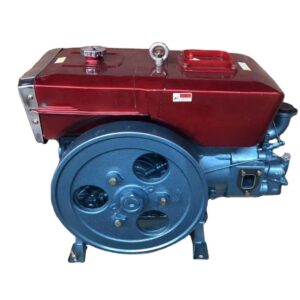
The engine. It is rated in horsepower (Hp). The higher the HP, the more powerful it is
JD Diesel Water Pumps Characteristics
- high efficiency
- wide performance range
- safe and stable operation
- long service life because the cast iron impeller and volute reduce vibration and wear on the mechanical seal and engine
- convenient installation and maintenance
- can channel hot water, abrasive or corrosive liquids by changing the material of the water pump’s flow-through components, the form of the seal and adding a cooling system
Working Principal
After the start, the impeller rotates rapidly so that the water in the impeller channel flows towards the volute. During this time, a vacuum is formed in the inlet, and water flows from the suction pipe to the pump through the impeller channel
The right most critical terms when identifying the right pump performance is water volume and the lift/ head. Generally, a trade -off occurs between head and flow with an increase in one causing a decrease in the other and vice versa. Head refers to the gains or losses in pressure caused by gravity and friction as flows through the system. The lift is the vertical distance from the water line to the center line of the impeller
The greater the lift and the water volume required, the larger the engine power. For instance, to achieve a flow rate of 80 cubic litres per hour, at a head of 100M, then the engine power must be from 22Hp and above
JD Diesel Water Pumps Prices
| Model | Specs; head, flow rate, outlet size, and horsepower | Price in KES |
| JD | 65M, 38cubic per hour, 2″ and 14Hp | KES 113,000 |
| JD | 65M, 38cubic per hour, 2″ and 16Hp | KES 116,000 |
| JD | 65M, 38cubic per hour, 2″ and 18Hp | KES 129,000 |
| JD | 65M, 38cubic per hour, 2″ and 22Hp | KES 141,000 |
| JD | 100M, 80 cubic per hour, 3″ and 22Hp | KES 148,000 |
| JD | 65M, 38cubic per hour, 2″ and 24Hp | KES 158,000 |
| JD | 100M, 80 cubic per hour, 3″ and 24Hp | KES 165,000 |
| JD | 65M, 38cubic per hour, 2″ and 30Hp | KES 172,000 |
| JD | 100M, 80 cubic per hour, 3″ and 30Hp | KES 180,000 |
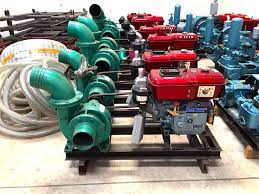
Complete units of JD diesel water pumps by Grekkon Limited
When assembling a JD diesel water pump, use the right steel frame gauge to hold the unit. Ensure that the rubber pulleys joining the engine to the water pump have the right tension
